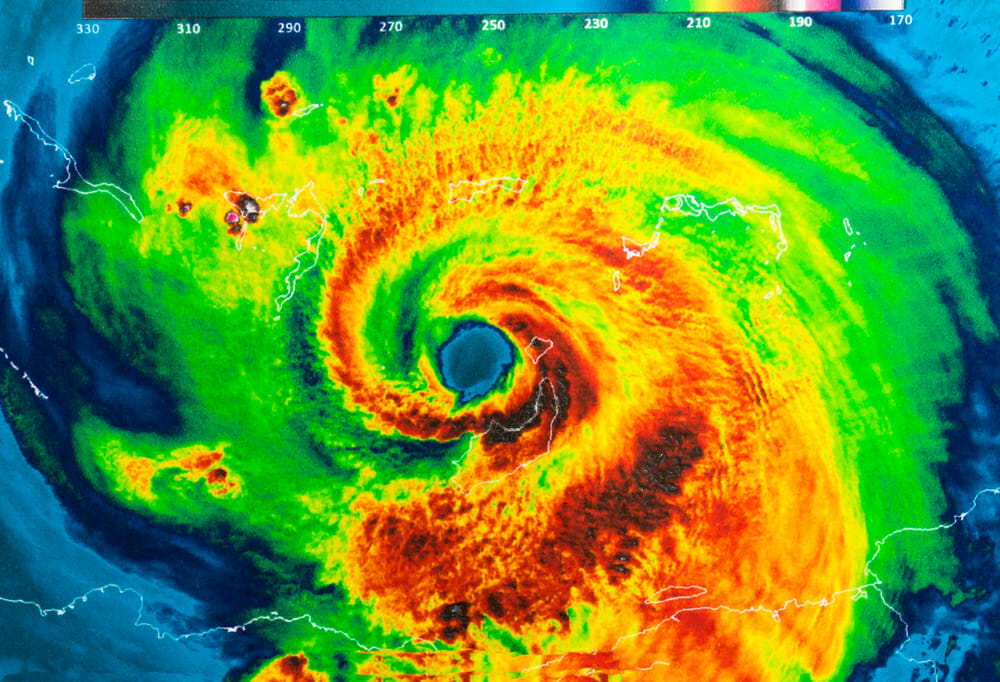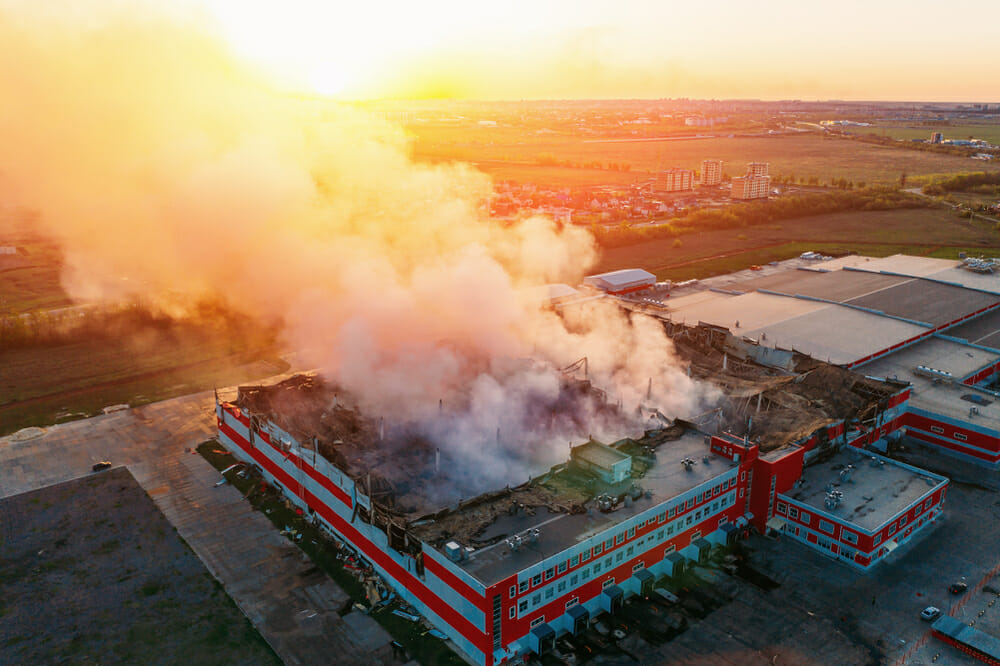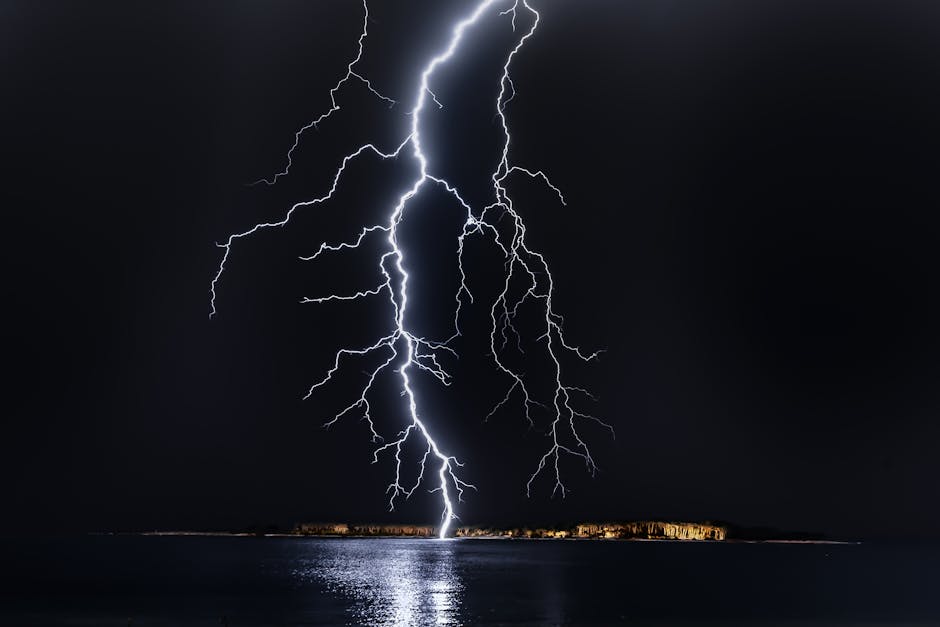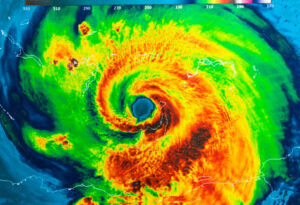Introduction
Have you ever caught yourself anxiously watching as hailstones bombard your property, silently calculating the potential cost of repairs? Hail storms can cause severe damage to vehicles, outdoor decorations, and structures. This damage, if not promptly addressed, can significantly depreciate property value and lead to substantial expenses for repairs and restoration. One way to minimize financial risk and safeguard your property value is by having a comprehensive insurance policy that includes hail storm damage.
Understanding the Impact of Hail Storms on Property
Hail storms are unpredictable and can strike with little warning, leaving a trail of destruction in their wake. From dents in your car to impacted siding, broken windows, or pockmarked roofing on your home or commercial property, the extent of the damage can be substantial. It’s important to inspect and document all damages as soon as possible after a storm, as this will strengthen your hail storm damage insurance claim.
The Importance of Having a Comprehensive Insurance Coverage
When it comes to managing the financial implications of such damage, insurance plays a pivotal role. A comprehensive insurance policy provides coverage for hail damage. This means you may be compensated for losses or damages incurred during a hailstorm. Therefore, understanding your coverage, its limitations, and your deductible can prove invaluable when facing the aftermath of a hail storm.
| Quick Information | Details |
|---|---|
| Do insurance policies cover hail damage? | Yes, when you hold so-called comprehensive coverage. |
| Does hail damage affect property value? | Yes, depending on the extent and location of the damage as well as the type of property. |
| Are there time limits to file a hail damage claim? | It varies by the insurer. It is best to file a claim as soon as you notice the damage. |

Time is of the essence when dealing with a hail storm damage insurance claim. While many insurers do not set a strict deadline for filing a claim, the longer you delay, the harder it may be to build a strong, successful case. Our team at Insurance Claim Recovery Support is here to help you through every step of the claim process, ensuring that your claim is managed effectively, maximizing your potential for fair compensation.
Understanding Your Insurance Coverage
Understanding your insurance coverage is an essential step towards a successful hail storm damage insurance claim. This knowledge will help you comprehend what the insurance company will cover, how much they will pay, and what your responsibilities are in the process.
What Does Your Insurance Policy Cover?
Your insurance policy outlines the specific types of damage covered and the extent of the coverage. For hail damage, the policy should detail the kind of damage hail can cause, such as damage to the roof, windows, or exterior of buildings, and whether these are covered.
It’s worth noting that some policies might have exclusions or limitations related to hail damage, especially in areas prone to frequent hail storms. Some policies may also have separate deductibles for hail damage. It’s important to review your policy carefully and if needed, discuss it with your insurance agent or a public adjuster for clarification.
The Role of Comprehensive Coverage in Hail Damage
Comprehensive insurance coverage typically includes hail damage. This policy is designed to cover non-collision damage to your property, including damage from weather events like hail storms.
Comprehensive coverage can protect you from the financial burden of repairing or replacing your property following a hail storm. The payout from a claim is usually based on the market value of the property at the time of loss.
However, the specifics of how insurance covers hail damage can vary greatly depending on the policy and the insurance company. It’s essential to familiarize yourself with these details to avoid surprises during the claim process.
The Limitations of Auto Liability Coverage
Auto liability coverage, unlike comprehensive coverage, may not cover hail damage. Liability coverage is designed to cover the costs if you are responsible for an accident and cause damage to another person’s vehicle or property, or if someone is injured.
However, it does not cover damage to your own vehicle. Therefore, if your car is damaged by hail, and you only have liability coverage, you may be responsible for covering the repair costs.
The Importance of Windstorm and Hail Coverage
In regions where hail storms are common, having windstorm and hail coverage can be beneficial. This coverage is designed to protect your property from damage caused by wind or hail.
Particularly in storm-prone areas, insurance companies may exclude hail and wind damage from standard policies, making it necessary to purchase this additional coverage.
At Insurance Claim Recovery Support, we recommend regularly reviewing your policy to understand what is covered and what isn’t. Knowing the limits of your coverage and the amounts of your deductibles can be crucial in the event of a hail storm damage insurance claim. Be aware of any specific requirements in your policy as failure to adhere to them could potentially lead to a denial of your claim.
Preparing for a Hail Storm Damage Insurance Claim
If your property has been hit by a hail storm, it’s crucial to take immediate action to protect your investment and prepare for a hail storm damage insurance claim. Here’s a step-by-step guide to help you navigate this process.
Steps to Take Immediately After a Hail Storm
The first step after a hail storm is to assess the damage. Safety should always come first, so don’t risk walking on a damaged roof. Instead, hire a licensed contractor to inspect the condition of your roof and document the damage.
Hail damage isn’t limited to the roof. Check also the siding, AC units, and other parts of your property that may have been exposed to the hail. The extent of the damage you can prove will directly impact the amount you get compensated by your insurance company.
Documenting the Damage: Photos, Lists, and Receipts
Thorough documentation is key to a successful hail storm damage insurance claim. Make a list of the damages and take clear pictures before you make any temporary repairs. Capture images of hailstones next to a ruler or coin for size reference and document the number of hail marks within a 10×10 square ft. area. Also, keep all damage-related invoices, billing statements, and receipts as they can provide valuable proof for your claim.
Preventing Further Damage: Temporary Repairs and Precautions
Once you’ve documented the damage, it’s time to prevent further damage. You can make temporary repairs and keep your receipts. However, do not make permanent repairs until your insurance company has had a chance to inspect the damage and you have agreed on the cost of the repairs. If your home is unhabitable, check with your insurance company to determine which expenses will be reimbursed.
As policyholders, our commitment at Insurance Claim Recovery Support is to guide you through this process and make sure you receive the maximum reimbursement for your claim.
Filing Your Hail Storm Damage Insurance Claim
After you’ve taken the necessary immediate steps and gathered documentation of the damage, it’s time to officially file your hail storm damage insurance claim.
Contacting Your Insurance Company: When and How
The first step is to contact your insurance company as soon as possible. Most insurance companies require that claims be filed within a certain time frame, so it’s essential not to delay this process. When you call or email your insurance company, keep a record of everyone you talk to and be ready to answer questions about the damage. In some cases, your insurance company may offer an advance payment if you need help quickly.
Make sure your adjuster and company have your current phone number and email address. Also, make sure your address is visible from the street. You may need to post a sign with your address in the yard.
Working with a Public Insurance Adjuster: The Role of Insurance Claim Recovery Support LLC
Navigating the insurance claim process can be overwhelming. That’s where we come in. At Insurance Claim Recovery Support LLC, we’re committed to standing up for policyholders and advocating for their rights. Our years of experience and expertise enable us to effectively navigate the complexities of the insurance claim process and secure the best possible settlement for our clients.
Working with a public insurance adjuster can make the process less stressful and more profitable. We’ll help you understand your insurance policy, negotiate with the insurance company, and ensure that every step is taken to secure the compensation you’re entitled to.
Understanding the Claim Process: From Filing to Settlement
The claim process starts with filing, where you notify your insurance company of the damage. Then, the insurance company will either request photos of the damage or send someone to inspect it in person.
After the assessment, your claim will be reviewed, and the insurance company will determine the amount of compensation. This amount can depend on various factors, such as the extent of the damage, the cost of repairs, and the terms of your insurance policy.
If the claim is approved, the insurer will send you a check for either the Actual Cash Value (ACV) or Replacement Cost Value (RCV), depending on your policy. ACV is the depreciated value of your roof, while RCV is the cost of a new roof.
Once you’ve received payment, you’ll need to use it to complete the repairs and provide proof to your insurance company that the repair or replacement was done.
Filing a hail storm damage insurance claim can be a complex process, but with the right information and professional help, it can be made much smoother. At Insurance Claim Recovery Support, we’re here to help you every step of the way, making sure you get the fair settlement you deserve.
Navigating the Claim Process
Embarking on the claim process can be daunting, but understanding the steps involved can help you navigate it more effectively. This involves dealing with claim adjusters and roofing contractors, understanding the difference between Actual Cash Value (ACV) and Replacement Cost Value (RCV), and providing proof of repair or replacement to your insurance company.
Dealing with Claim Adjusters and Roofing Contractors
Once you’ve filed your hail storm damage insurance claim, you will begin working with an insurance adjuster. Their role is to inspect the damage to your property and make an evaluation. They will determine whether the damage was caused by hail and estimate the cost of repairs. Having your own public adjuster during this process can ensure an unbiased assessment. They can help challenge any underestimation of damage or repair costs by the insurance company’s adjuster. At Insurance Claim Recovery Support, we provide this valuable service, ensuring that your interests are represented fairly during the inspection process.
In addition to dealing with adjusters, you’ll also need to work with roofing contractors for the repair or replacement of your roof. Choosing a reliable and trustworthy contractor is crucial to ensure the repairs are done correctly and to the highest standards. We have extensive experience in dealing with various contractors and can provide valuable insights and recommendations.
Understanding the Actual Cash Value and Replacement Cost Value
The insurance company will typically offer a payout based on either the Actual Cash Value (ACV) or the Replacement Cost Value (RCV) of your roof. ACV is the depreciated value of your roof, whereas RCV represents the cost of a new roof. Depending on your insurance policy, you would receive either the ACV or RCV.
It is essential to understand this difference, as it has a direct impact on the amount you’d receive from your insurance company. ACV takes into account the age and wear of your roof, whereas RCV would cover the cost of a new roof irrespective of the age or condition of the damaged roof.
Providing Proof of Repair or Replacement to Your Insurance Company
After receiving the payout from the insurance company, you are expected to commence the repair or replacement work promptly. Once completed, you need to provide the insurance company with proof that the work was done. This could be in the form of invoices or receipts from the contractor.
The insurance payout is intended for the repair or replacement of your damaged roof. Therefore, the insurance company needs this proof to ensure that the funds have been used appropriately. At Insurance Claim Recovery Support, we guide you through this process and help you document and submit the required proof.
Navigating a hail storm damage insurance claim process can be complex, but with the right guidance and support, you can ensure a fair and prompt settlement. We are committed to helping you through this process, advocating for your rights as a policyholder, and ensuring you receive the maximum amount you’re entitled to under your policy.
Protecting Your Property from Future Hail Storms
After navigating the complexities of a hail storm damage insurance claim, it’s worthwhile to consider how to better protect your property from future hail storms. By investing in protective measures and maintaining regular property maintenance and inspections, you can mitigate the potential damage and subsequent insurance claims.
Investing in Protective Measures: Padded Car Covers and Roof Reinforcements
One of the most straightforward ways of protecting your vehicle from hail damage is to invest in a padded car cover, also known as a hail protection blanket. This can considerably reduce the impact of hail on your vehicle, helping to protect it from denting and other forms of damage.
For your property, consider roof reinforcements or even hail-resistant roofing materials. Hail-resistant shingles, for example, are designed to withstand the impact of hailstones without sustaining damage. While these might come with a higher upfront cost, they could save you significantly in the long run by reducing the need for expensive repairs or replacements after a hail storm.
Regular Property Maintenance and Inspections
Routine property maintenance and inspections are crucial in protecting your property from hail damage. Regular roof inspections, preferably before storm season, can help identify and address potential vulnerabilities. At Insurance Claim Recovery Support, we recommend having your roof inspected by a professional, as roof inspections can be hazardous if not performed properly.
In addition to roof inspections, general property maintenance can play a significant role in preventing hail damage. This includes tasks like trimming tree branches so they don’t rub on the roof, clearing debris from your gutters and downspouts, and ensuring your property’s overall structural integrity.
If a hail storm does cause damage, it’s crucial to document all hail damage and file your claim as soon as possible. As your partner in the hail storm damage insurance claim process, we at Insurance Claim Recovery Support are here to guide you every step of the way, from assessing and documenting the damage to dealing with your insurance company.
By taking proactive measures to protect your property and having a clear understanding of your insurance coverage, you can navigate the aftermath of a hail storm with less hassle, ensuring that your property is restored promptly and appropriately.
Conclusion
The Importance of Advocacy in Insurance Claims
Dealing with an insurance claim, particularly a hail storm damage insurance claim, can be overwhelming and complex. Knowing what your policy covers, documenting the damage accurately, and ensuring you get a fair settlement requires time, knowledge, and experience. This is where advocacy becomes essential.
Having an advocate by your side can significantly ease the process and increase the likelihood of a favorable outcome. Advocates like public insurance adjusters understand the insurance claim process inside out and are there to represent your interests, not the insurance company’s. They can help you understand your policy, document the damage, file the claim, and negotiate a fair settlement.
How Insurance Claim Recovery Support LLC Can Help You Maximize Your Settlement
At Insurance Claim Recovery Support LLC, we are committed to standing up for your rights as a policyholder. Our team of experienced hail damage adjusters is dedicated to helping you navigate the complexities of the insurance claim process and securing the best possible settlement for you.
We tailor our approach to each claim, understanding that each one is unique and requires a personalized strategy. From assessing and documenting damage, to liaising with insurance companies, we are there for our clients every step of the way. Our track record speaks for itself; we have successfully managed a wide range of hail damage claims and helped countless policyholders achieve fair settlements.
Recap: Steps to Filing a Hail Storm Damage Insurance Claim Without Hassle
Filing a hail storm damage insurance claim can be a daunting task, but it doesn’t have to be. Here is a recap of the steps to file a claim without hassle:
- Understand your insurance coverage.
- Document the damage immediately after the hail storm.
- Prevent further damage by making temporary repairs.
- Contact your insurance company to file the claim.
- Work with a public insurance adjuster like our experienced team at Insurance Claim Recovery Support LLC.
- Navigate the claim process from filing to settlement.
You don’t have to face this process alone. With the right help and a clear understanding of the claims process, you can manage the situation effectively and ensure you get the settlement you rightfully deserve.
If you’re in the midst of a hail damage claim and feeling overwhelmed, remember you’re not alone. Reach out to us today for a free case review. For more insights and information, explore our articles on why hail and wind property damage insurance claims get denied or underpaid and how to choose a public adjuster for hurricane damage.







